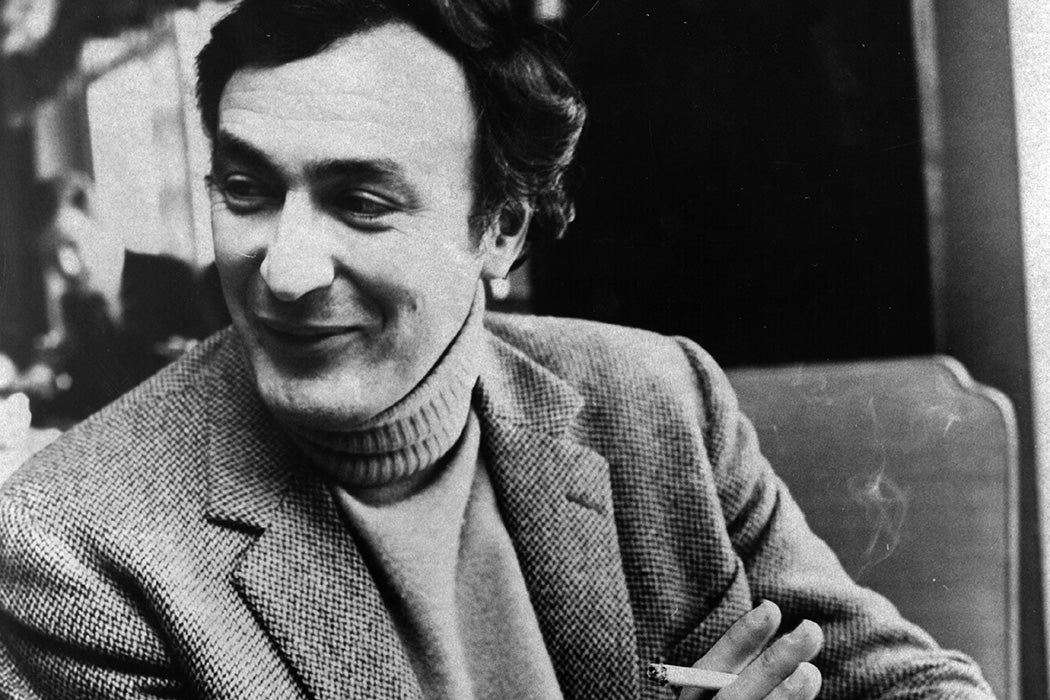According to artist William Klein, who died earlier this month at age 96, “In the fashion world, you can never be too absurd.” He was speaking about his time at Vogue, where he worked from 1955 to 1965, but he could have easily applied that assertion to any of his work. From painting, to photography, to film-making, absurdity has always played a role in his creativity. But it wasn’t just the absurd; the playful, the satirical, and the surprising all found a home in his portfolio. Klein, as Jared Rapfogel writes in Cinéaste, fit into the “rare and sometimes confounding category of artists who are uninterested in (or constitutionally incapable of) limiting themselves to a single art form.”
Born in Manhattan in 1926, Klein spent a lot of his childhood taking in the exhibitions at the Museum of Modern Art. After leaving college, he enlisted in the US Army. “I had gotten into the army at the end of the war,” Klein told Aaron Schuman during an interview for Aperture Magazine in 2015. “And since I had no knowledge of horses or radio transmissions, I was designated as a radio operator on horseback.” He was discharged while in Paris, and after meeting a woman there, decided to stay.
He started exploring the Parisian art world, studying with painter Fernand Léger. At an exhibition of his murals in 1952, Klein connected with an architect who asked him to paint murals on a series of recently installed room-dividers. After he finished, Klein photographed them, letting them catch the light in the room so shapes and shadows created subtle changes in the form. “I saw that this was a way in which photography could direct a change in the use of geometrical abstract forms,” he told Schuman. “Then I realized that I didn’t need panels with abstract forms painted on them—I could do it in a darkroom, and so that’s what I did.”
When he was later offered a contract position with Vogue, neither he nor the fashion world knew what to make of each other. Klein was “never interested in the construction or the material quality of couture dresses,” explains American Studies scholar Bettina Friedl. This sort of aloofness may have been “why his fashion shots [were] far more irreverent and playful than those of his older colleagues.”
Klein brought the physical world into fashion in ways that were often unappreciated or unpredictable. With him behind the lens, “models were often left to deal with whatever the city threw at them,” explains film historian Des O’Rawe. Everything from passersby to bad weather found their way into his frame. This technique pushed societal limits as well as artistic, with one 1961 image showing a Black barber sitting in his shop to the side of the models. When the photo appeared in Vogue, the barber was cut out “either because he distracted attention from the models, or because he was black, or both,” Friedl writes.
Weekly Newsletter
It may have been experiences like this that led Klein to make films, including his first feature, Who Are You, Polly Maggoo? (1966), that worked as “a satire on both fashion and media, with each proving as vacuous as the other,” Rapfogel explains. His 1977 film The Model Couple also presented the satirical, with its prescient look at surveillance and the age of reality shows. He also worked in documentaries. Perhaps his best-known was Muhammad Ali: The Greatest (1969), which chronicled the boxer’s preparations for his 1964 fight against Sonny Liston. Klein also filmed other notable figures and events such as Little Richard, Eldridge Cleaver, and the French Open. In all, Klein made more than twenty films, each reflecting his unique sensibilities.
Klein, Rapfogel writes, was “a filmmaker who [was] incapable of cautiousness or half measures, whose films are defiantly uncommercial, politically and socially committed, and unimpeachably independent.”







